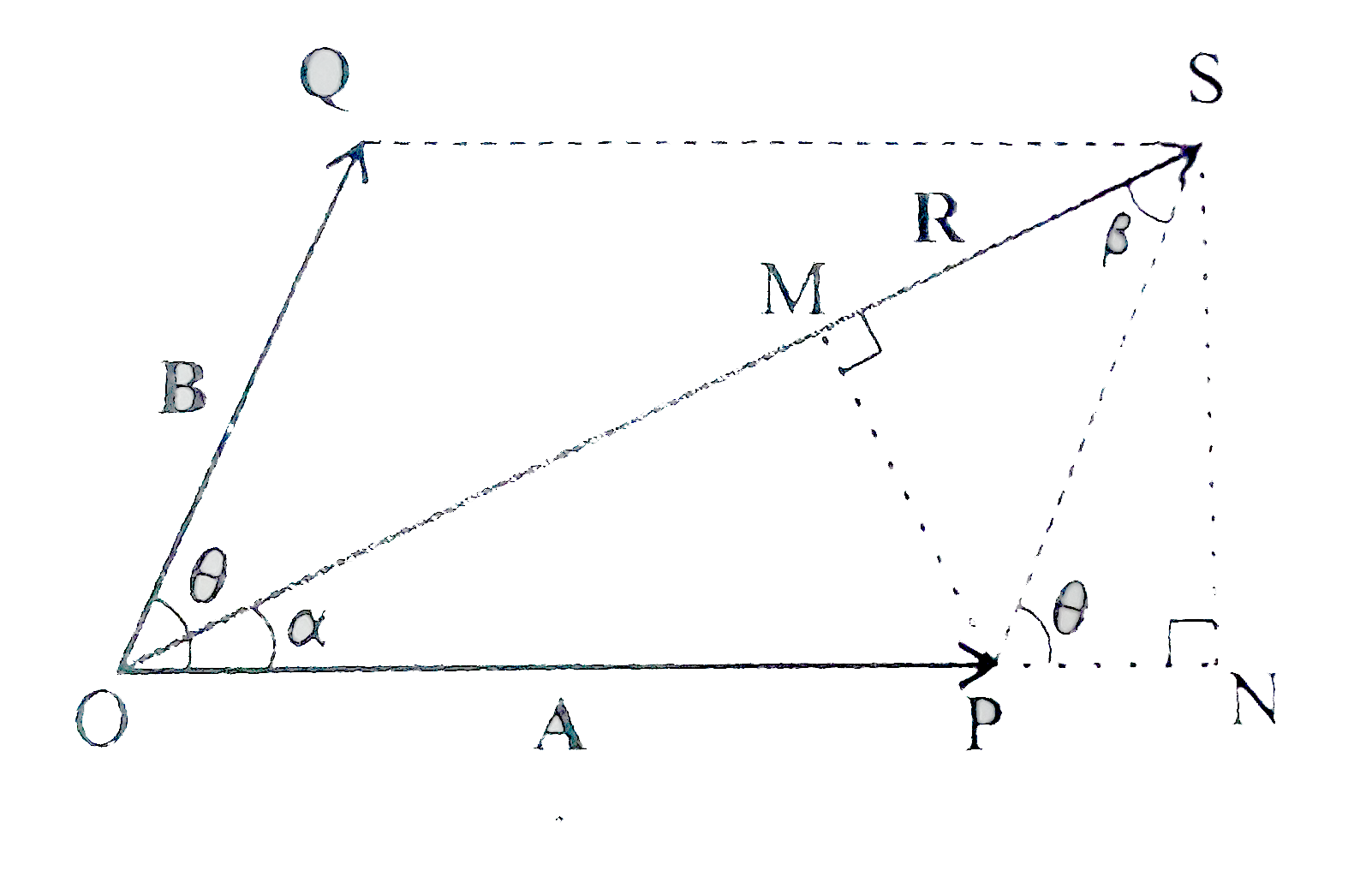The magnitude of the resultant of two vectors is ……………………………………..When they act in the same direction and is ……………………………………….. When they act in opposite direction.
To solve the question regarding the magnitude of the resultant of two vectors when they act in the same and opposite directions, we can follow these steps:
1. Understanding Vector Addition:
When two vectors are added, the resultant vector depends on both the magnitudes of the vectors and the angle between them.
2. Vectors Acting in the Same Direction:
- When two vectors →A and →B act in the same direction, the angle θ between them is 0∘.
- The formula for the magnitude of the resultant vector R when two vectors are added is given by:
R=A+B
- Therefore, when they act in the same direction, the magnitude of the resultant is the sum of the magnitudes of the two vectors.
3. Vectors Acting in Opposite Directions:
- When the two vectors act in opposite directions, the angle θ between them is 180∘.
- In this case, the formula for the magnitude of the resultant vector becomes:
R=|A−B|
- Thus, when they act in opposite directions, the magnitude of the resultant is the absolute difference of the magnitudes of the two vectors.
Final Answer:
- The magnitude of the resultant of two vectors is the sum of their magnitudes when they act in the same direction, and it is the absolute difference of their magnitudes when they act in opposite directions.
When two vectors are added, the resultant vector depends on both the magnitudes of the vectors and the angle between them.
- When two vectors →A and →B act in the same direction, the angle θ between them is 0∘.
- The formula for the magnitude of the resultant vector R when two vectors are added is given by:
R=A+B
- Therefore, when they act in the same direction, the magnitude of the resultant is the sum of the magnitudes of the two vectors.
- When the two vectors act in opposite directions, the angle θ between them is 180∘.
- In this case, the formula for the magnitude of the resultant vector becomes:
R=|A−B|
- Thus, when they act in opposite directions, the magnitude of the resultant is the absolute difference of the magnitudes of the two vectors.
- The magnitude of the resultant of two vectors is the sum of their magnitudes when they act in the same direction, and it is the absolute difference of their magnitudes when they act in opposite directions.
Topper's Solved these Questions
- KINEMATICSBOOK - PRADEEPCHAPTER - KINEMATICSEXERCISE - 4 Fill in the blanks
11 Videos
- KINEMATICSBOOK - PRADEEPCHAPTER - KINEMATICSEXERCISE - 1 NCERT multiple
11 Videos
- KINEMATICSBOOK - PRADEEPCHAPTER - KINEMATICSEXERCISE - 2 Fill in the blanks
10 Videos
- GRAVIATIONBOOK - PRADEEPCHAPTER - GRAVIATIONEXERCISE - Assertion-Reason Type Questions
19 Videos
- LAWS OF MOTIONBOOK - PRADEEPCHAPTER - LAWS OF MOTIONEXERCISE - Assertion- Reason Type Questions
17 Videos
Similar Questions
Knowledge Check
Two trains 100 metres and 95 metres long respectively pass each other in 27 seconds when they run in the same direction and in 9 seconds when they run in opposite directions. Speed of the two trains are
A44km/hr, 22km/hrB52km/hr, 26km/hrC36km/hr, 18 km/hrD40km/hr, 20km/hrThe maximum and minimum magnitude of the resultant of two vectors are 17 units and 7 units respectively. Then the magnitude of the resultant of the vectors when they act perpendicular to each other is :
A14B16C18D13The greatest & the least magnitude of the resultant of two forces of constant magnitudes are P & Q respectively. If the forces act at an angle 2α, then prove that the magnitude of their resultant is given by √P2cos2α+Q2sin2α.
A√(F2cos2α+G2sin2α)B√(F2sin2α+G2cos2α)C√(F2+G2)D√(F2−G2)
Find the magnitude and direction of the resultant of two vectors A and B in the terms of their magnitudes and angle θ between them.

View SolutionWhat will be the resultant force when two forces act in opposite directions on an object?
View SolutionWhat happens when force acting on an object are in opposite direction and equal?
View SolutionThe maximum and minimum magnitudes of the resultant of two vectors are 23 units and 7 units respectively. If these two vectors are acting at right angles to each other, the magnitude of their resultant will be
View SolutionWhat happens when two forces act in opposite direction?
View Solution
